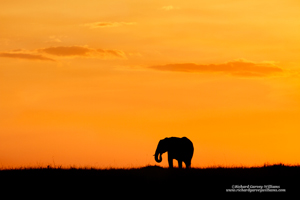Tutorials
How tight to crop?



Generally speaking, minimal negative space (empty or ‘non-subject’ parts of the image – often background) in an image can have a tendency to leave us, as viewers, feeling claustrophobic or cramped. Ample negative space by contrast allows the subject matter and us to breathe. An excess, however, can give a sense of luxuriousness – space to spare. So, how much we end up leaving might depend on a whole list of potential considerations such as:
 • The subject matter and messages we wish to convey about it. We may want all attention to fall on one aspect of our subject that we are illustrating, as with this elephant to the right.
• The subject matter and messages we wish to convey about it. We may want all attention to fall on one aspect of our subject that we are illustrating, as with this elephant to the right.
• Messages we wish to convey about the subject matter’s relationship to its environment. We may wish to reveal our subject matter as existing in a vast open space, as in the opening image of the bears on the mud-flats.
• The relationship of the subject matter to other elements around about. A tense, threatening relationship might require tight cropping, whereas a free, relaxed one might benefit from some space.
• Other compositional considerations such as our desire to position the subject in a pleasing position within the frame or our desire to convey a sense of motion in a particular direction by allowing some ‘nose room’. The flying gull below is an example.
• Our own individual perceptions, conditioning and needs. In this context, how we tend to crop our images may become a reflection of our ‘style’. An extensive collection of a particular photographer’s work that I saw recently left me wondering why he had cropped so many of them so tightly at the bottom edge. It would have been interesting to ask around to see if others had the same perception and if the photographer himself was consciously doing this for any reason.
In my field of work in wildlife photography, it’s my perception that when many people first acquire their long lenses they have a tendency to crop rather tightly. With more experience we show more flexibility, often backing off a little and allowing more breathing room. Perhaps this isn’t a question of what’s right or wrong, but simply a reflection of the excitement the photographer with the new lens experiences in suddenly being able to get so close to the subject matter and perceiving so much detail.
